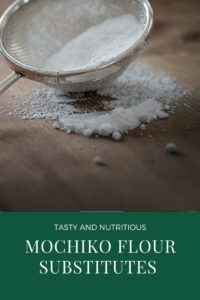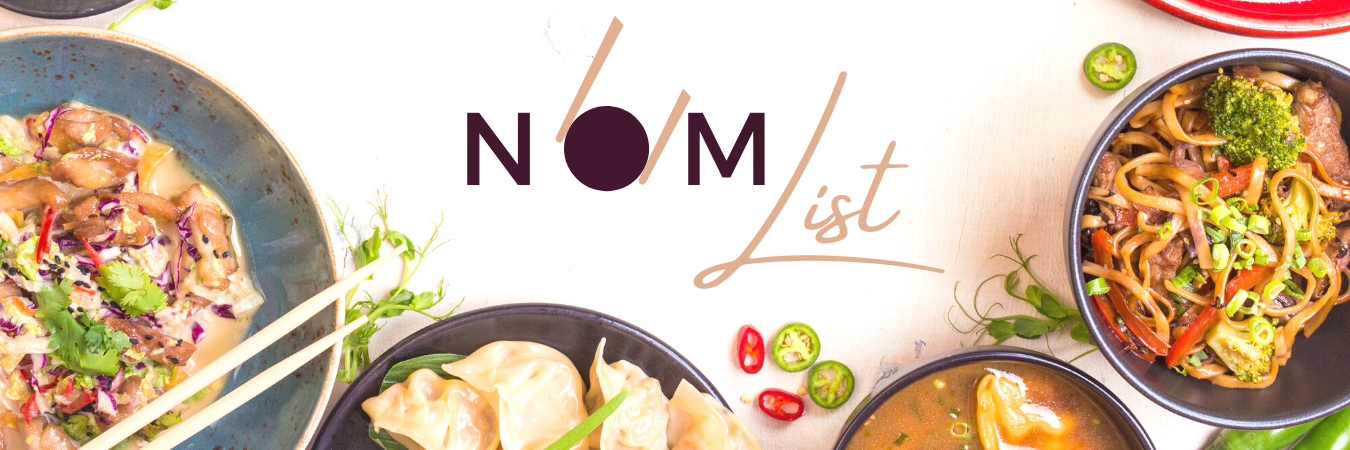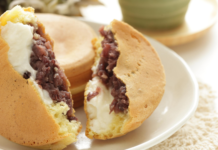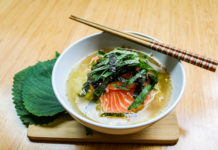
When it comes to cooking, baking, or preparing dishes, one main ingredient for certain dishes is flour. Imagine your favorite waffles or muffins at your best brunch spots, or even rice noodles to eat your favorite soups and stir frys! Mochiko Flour, also known as sweet rice flour, has a high starch content and a sticky and dreamy texture. “Wait, what is mochiko flour?”, you may ask yourself as you’re reading this right now. Notably, you may see this flour when eating certain Japanese sweets, such as anmitsu, daifuku, or dang! Many of these Asian delicacies are one that you may see in your favorite bakery, or little shops in certain cities. In fact, Mochiko goes beyond Asian dishes. Picture some French bechamel sauce, or juicy fried chicken. Maybe you wouldn’t imagine that you can make some of your favorite dishes and treats at home! But, now, you can, and we’re here to help you satisfy all of your cravings!
The Best Substitutes for Mochiko Flour:
Now, let’s get down to business. You may not even know what Mochiko flour is, and might be thinking, “what’s the difference between this and any other flour?” You may even have a recipe that calls for this mysterious sweet rice flour! We’ll get to answer all of these questions and show you all of the things you can do with it, or use in place of it.
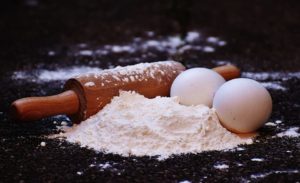
To put it simply, mochiko flour is made from mochi rice, which is sticky and glutinous. The best part about it is that it is starchy, and does not contain gluten, which is a great alternative for those that are gluten free. Of course, since sweet rice flour is gluten free, it is not effective when using yeast raised breads. The more mochiko flour you use, the lower rise you’ll get.
You are able to find mochiko flour at most Asian grocery stores, or even online. Since sweet rice flour removes the nutrients and carbohydrates in your food, alternatives that are often used include brown rice flour, rice powder, potato starches, arrow root powder, tapioca starches,corn starches, wheat powder (contains gluten), as well as sorghum flour.
Where to Buy Mochiko Flour
The best place to find Mochiko Flour would be in Asian supermarkets. Your best bet would be Japanese grocery stores! You can try looking at stores like Mitsuwa Marketplace, Marukai Market, Ranch 99, H Mart, or any local chains. But, if you can’t find any in a store near you, never fear! Amazon also offers Mochiko Flour in packs of 3, or they are individually sold. Keep a lookout on what type of flour you’re purchasing; it might be a different rice used. You can also look into big chain grocery stores, just be sure to call and clarify ahead of time.
Mochiko Flour Recipes
Mochiko flour can be used in many recipes, sauces, and noodles. Whether you’re serving up some bechamel and vegetables, or making mochi itself, Mochiko flour is a must have in your kitchen pantry. Here’s some tips when cooking or baking with mochiko.
First, when mixing, mochiko flour retains chewy and sticky texture. It is best used with desserts or flavorful foods, as it won’t overwhelm your dish. Since it is a flour, it will add structure to your noodle base, pastas, and cakes to prevent them from falling apart.
One thing to note: If you use too much mochiko, it can make your food gum-like, so you can replace regular flour with this sweet rice flour by 15-20% less. You can use a 1:1 ratio replacement in cornstarch/wheat flour when it comes to breading, frying dishes, or making dumpling wrappers.
So, now you know the properties of mochiko, so we have some recipes lined up for you to try out! Here are some of the best recipes to use in the kitchen. Yummy and easy!
Sweet Rice Flour and Coconut Cake: Talk about sweet and creamy! This butter mochi recipe features coconut milk that gives it a fluffy and chewy texture mixed with your flour. The recipe makes 24 voluminous cakes, and everyone loves making it as is. You can also add shredded coconut flakes on top to give it that extra flavor! https://bit.ly/2Huq6qu
Honey Walnut Shrimp: This is a classic dish, popular when you are craving that Chinese take out! Super tasty shrimp, with caramelized walnuts all mixed together and stir fried. What more could you ask for?! Best served on top of some rice, with added chili oil, or even over noodles. This quick, 15 minute recipe will have you asking for seconds! https://bit.ly/2Hm8G0F
Mochiko Chicken: Get ready for loads of flavor! This chicken is marinated for a whole day, and deep fried with your favorite spices. Perfect for any parties coming up, family reunions, or game nights when you want some good fried chicken. Perfect dipped in ranch or blue cheese, and you can adjust the salt as needed, all to your preference! https://armagazine.com/2WbRnru
Rice Flour Brownies: A recipe straight from Koda Farms! Perfect for your next holiday or company party, or just a little treat for the upcoming weekend! These brownies have walnuts, but feel free to take them out for any allergy restrictions. On the website, you’re also able to find different dessert recipes. Just as yummy as Grandma’s, we can guarantee it! https://bit.ly/2W3yB5b

Glutinous Rice flour vs. Mochiko
The biggest difference between Mochiko Flour and most glutinous rice is the fact that mochiko is made from short-grain glutinous rice. Mochiko rice flour is finely powdered. First, it is soaked in water, then pressed into fine powder. The overall cost of mochiko is cheaper than other various glutinous rice flours. When cooking, sweet rice flour is not as absorbent to water as other flours, and has a gooey texture.
It is also soaked in water for long periods of time; after it is drained, it is ground from a mill. Lastly, it is compressed and laid out in the sunshine to dry. The overall product produced is a smooth texture, with flour that looks course and clumpy. When cooking with various flours, once baked goods cool down, they don’t get as hard as quickly as mochiko flour does.
How to Make Mochiko Flour
This simple and easy recipe is perfect if you can’t find any Mochiko rice flour in stores or online. Takes about 1-2 days!
Ingredients: 2 Cups of Short Grain Rice
Directions:
- Wash your rice; put it inside your rice cooker or pot and fill it with cold water. Scrub your rice by hand and swirl it. Then, rinse your rice, stir and drain it. Repeat about 2-3 times.
- After the last refill, soak your rice in clean water for 8-15 hours. Put plastic wrap on top or keep inside your rice cooker.
- Strain your rice. It will have expanded.
- Put your rice through a strainer, coffee filter, or food processor (recommended). Grind it finely!
- Sift ground rice flour into a bowl; if too big, grind your rice beforehand again
- The dry mochiko rice flour can be put inside a plastic bag, flour bin, or can be used immediately.
Is mochiko rice flour the same as mochiko sweet rice flour?There are a bit of differences between rice flour, and sweet rice flour. So in short, yes!
Rice Flour is grounded using medium or long grain rices. It does have thickening agents, and is overall used in gluten-free flour mixes.
Mochiko sweet rice flour, as said earlier, is made with short-grain glutinous rice. This is known as sticky rice, which gives the thick consistency that you know best as mochi. Because it has a high starch content, it’s perfect to thicken and harden foods, like sauces, noodles, and pastries. It has an overall milky taste, and even though it’s called “sweet rice flour”, it is pretty mild overall.
Is Mochiko Gluten Free?
Yes, Mochiko Flour is gluten free, which is a perfect alternative to wheat flour. When we say “sweet glutinous rice flour”, we are referring to the sticky rice consistency of cooked flours. So, if you have a gluten-free diet, this is perfect for you! Don’t be afraid to switch up your flours, it can give different texture to your beloved dishes, and if you love mochi or chewy food in particular, this is a game-changer!
All in all, sweet rice flour does not have too much flavor, but rather, adds the texture that people love in desserts, noodles, or sauces. If you do want more nutrients, you can find the alternatives that we listed earlier, or even better, add some vegetables, proteins, and side dishes to compensate for it. Feel free to experiment with the proportions of mochiko / alternative flours to get that right consistency you love! Happy cooking!
